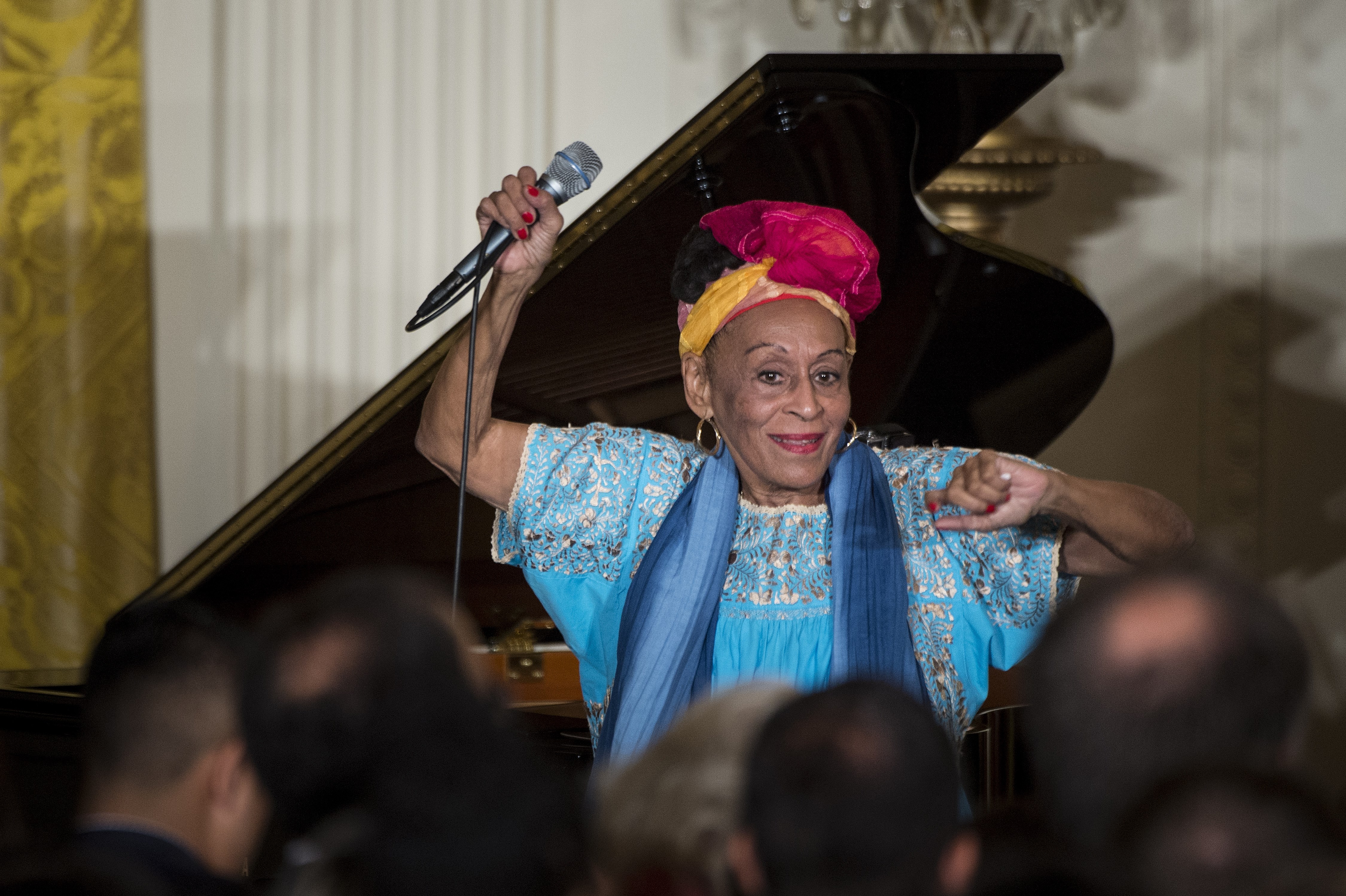Corrections & Clarifications: A previous article misidentified the schools where Mike Davison attended and taught.
HAVANA — Two decades after the debut of the Buena Vista Social Club, it’s still difficult to explain how a Cuban band of mostly elderly musicians playing songs from the 1920s and 30s became an international sensation.
“On the first tour, my wife was the road manager, but she was also their nurse,” said Juan de Marcos González, a composer and singer in the group. “This one had to take his diabetes medication at 7, that one had to take his blood pressure medication at 8.”
Yet their album won a Grammy, racked up more than 12 million in sales and inspired an Academy Award-nominated documentary. It led to performances at Carnegie Hall, the White House and venues around the world.
“They were like Madonna,” González said. “Women would scream when those old guys came on stage. It was incredible.”
Now, after an historic run that reignited a fascination with Cuban music, dance and culture, the Buena Vista Social Club is preparing for its final act. Four of the original members will get together one more time this weekend, playing back-to-back shows in Havana’s Karl Marx Theatre to officially bid farewell.
"Buena Vista isn't going to end," Eliades Ochoa, 69, a guitarist and vocalist in the band, said Thursday. “The film remains. The discs remain. And the memories remain that Buena Vista has left in the hearts of people around the world.”
"And we'll still be around for a little while, too," chimed in Omara Portuondo, 85, the band's female lead singer.
The band was conceived, oddly enough, by a couple of foreigners – American guitarist Ry Cooder and British music producer Nick Gold. The pair had collaborated on an album featuring African music, but had long wanted to highlight traditional Cuban music that had been cast aside in communist Cuba.
In Havana, González quickly joined up and recruited the musicians who were the experts on a Cuban music style called son. The slower feel of the music had largely faded into the history books in Cuba, with younger generations embracing salsa, rock and roll, rap and pop.
Miriam Escudero, director of the Esteban Salas Musical Heritage Cabinet of the Havana City Historian Office, said son was most popular in the eastern, rural provinces of Cuba in the early part of the 20th century. The sound developed from a blend of Spanish guitar music, African percussion rhythms and lyrical, romantic ballads.
Although the music wasn't popular outside of Cuba, that sound and those songs endured on the island, passed down from one generation to the next. And that's why, when the band got together in a dilapidated studio in Havana to cut the record, the songs came out easily.
"You go to Santiago de Cuba and you'll hear 25 people who sing like Compay Segundo," Escudero said, referring to a late singer in the band. "The problem is, nobody hears them."
That changed in 1997, when the album debuted, striking a nerve that most Americans didn’t even know they had.
Mike Davison, a trumpeter from Wisconsin, said he was first introduced to Cuban music when he was studying at the Eastman School of Music in New York in 1976 and was invited to sit in on a salsa gig nearby. Then 19, he easily accepted, confident he could hold his own even though he’d never heard of that music style. Then he looked over the sheet music.
“I felt like I was on a boat and I was about ready to get seasick,” he said.
But he got through the set and came away fascinated by the sound, one that has a simple harmony but a painfully difficult rhythm to keep up with. He started visiting the island every year, throwing his trumpet in his backpack and sitting in with local bands. Davison said Buena Vista’s success was that it introduced the rest of the U.S. to what he already knew.
“It’s that rhythm that draws people in,” said Davison, now a music professor at the University of Richmond who uses the Buena Vista documentary in his classes. “People don’t even know what’s happening, but it makes you get up and dance and feel good.”
![Buena Vista Ibrahim Ferrer [image : 84289238]](http://www.gannett-cdn.com/media/2016/05/12/USATODAY/USATODAY/635986632214159084-AP-PEOPLE-BUENA-VISTA-SOCIAL-CLUB.jpg)
On the other side of the country, Alisa Froman saw a similar fascination in San Francisco.
The disc came out in 1997, which was a low point in relations between the U.S. and Cuba. President George W. Bush would soon come into office and restrict Americans' ability to travel to the island. Cuba was going through its so-called "Special Period," a severe economic downturn that followed the collapse of the Soviet Union, Cuba's long-time benefactor.
Froman, a dancer who started visiting Cuba in 1993, said that environment created a negative impression among Americans that Cubans were uneducated, poor and had little to offer. Then the album came out, and suddenly people were asking Froman how to join her on her trips to the island.
“It put a more humanizing, interesting face to the Cuban people," said Froman, who now runs PlazaCUBA, a Berkeley-based organization that organizes cultural excursions to Cuba.
Lucy Walker hopes those faces will help foreigners learn about Cuba one more time.
The documentary filmmaker is working with Los Angeles-based Broad Green Pictures to release a film in early 2017 about the band's final tour. She said the film will explore the tumultuous history of Cuba, including the recent thawing of relations between the U.S. and Cuba. And she feels the surviving members of Buena Vista, as some of the most popular Cubans on the planet, are perfect guides to Cuba's story.
"It's a really good way in for a lot of people who are interested in learning about Cuba," Walker said Thursday. "There's a wave coming to Cuba, and what better way to understand that history than through the minds of those beautiful Cubans."
![Cuba Overview [oembed : 84293348] [oembed : 84293348] [oembed : 84293348] [oembed : 84293348] [oembed : 84293348] [oembed : 84293348] [oembed : 84293348] [oembed : 84293348] [oembed : 84293348] [oembed : 84293348] [oembed : 84293348] [oembed : 84293348] [oembed : 84293348] [oembed : 84293348]](/Portals/_default/Skins/PrestoLegacy/CommonCss/images/smartembed.png)


![Buena Vista White House [image : 84284720]](http://www.gannett-cdn.com/media/2016/05/12/USATODAY/USATODAY/635986586305774575-XXX-GettyImages-492828426-dcb.JPG)
